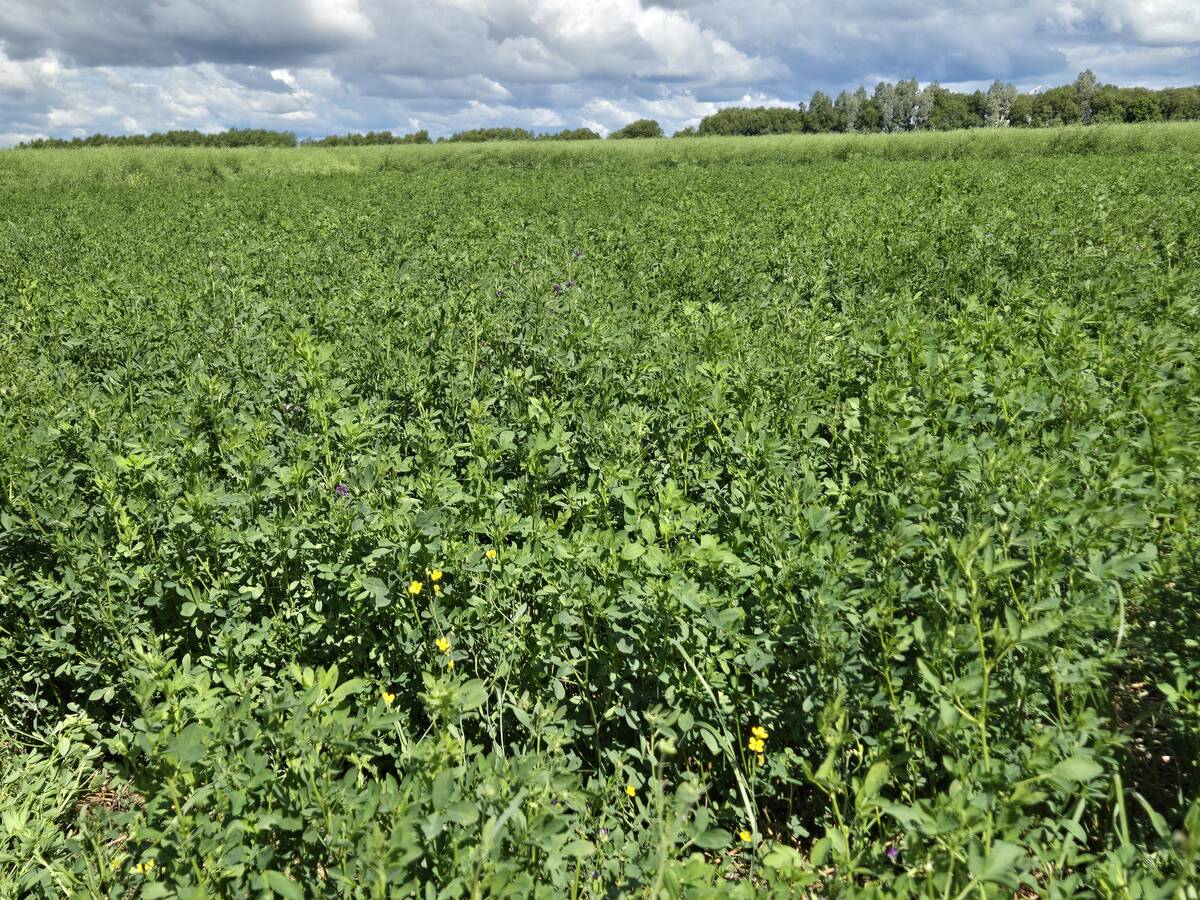Forage producers have a story to tell, says the chair of Canada Beef.
Brad Wildeman, who is also president of the Pound-Maker feedlot and ethanol company near Lanigan, Sask., told the recent Canadian Forage and Grassland Association conference that cattle is a green business.
“If we’re not going to raise cattle on that land, some of it’s going to get plowed up,” said Wildeman.
“A lot more crops are going to get grown in areas where probably the land can’t sustain it…. We’re going to create a lot more problems. And in fact, as I always tell my eco-friends in the city: eating beef is one of the greatest things you can do for the environment.”
Read Also

Manitoba Parkland research station grapples with dry year
Drought conditions in northwestern Manitoba have forced researchers at the Parkland Crop Diversification Foundation to terminate some projects and reseed others.
He said science proves that forage and grasslands promote biodiversity, reduce soil erosion and assist in carbon sequestration. As well, grasslands provide habitat for wildlife and insects that pollinate crops, and some cattle owners may add water back to the land.
The benefits can be even greater when wetlands are restored.
“We’re not going to see the 1,000-acre marshes ever restored that had Class 1 soils that are being used for canola (and) wheat production,” said Richard McBride of Ducks Unlimited Canada.
“It’s very, very likely that well into the future those are going to remain farmland. But where we are seeing an interest in restoring wetland is the smaller one- to two-acre wetlands that are found in association with rolly landscapes … where you have a lot of lands returning to forage production.”
Producers won’t necessarily see those environmental benefits reflected on their bottom line, and higher commodity prices can encourage land conversion in areas where production is favourable.
“When we start talking about biodiversity as a value, we don’t necessarily have dollar values,” said Ken Belcher of the University of Saskatchewan’s bioresource policy, business and economics department.
The economic incentive is with annual crops, which narrows biodiversity.
“We probably need to develop more than just a system of protected areas,” said Belcher. “There needs to be more of an integrated approach to develop biodiversity. There’s a need to integrate wildlife into the agricultural landscape.”
Ducks Unlimited Canada presented information at the Dec. 13-14 conference in Saskatoon that said non-market values of forages in Saskatchewan are as high as $2.4 billion.
Belcher provided research indicating well-managed grasslands also provide high diversity while not impacting economic returns. But there remains a tradeoff between production of market commodities and management for biodiversity.
Some producers at the conference expressed concerns that biodiversity will be lost if no cash value is placed on it.
“That’s where I think there is some value of understanding some of these tradeoffs, looking at things from more of a physical sense than a dollar sense,” said Belcher. “But that has to be embedded in the policy and it hasn’t been up until now.”
















